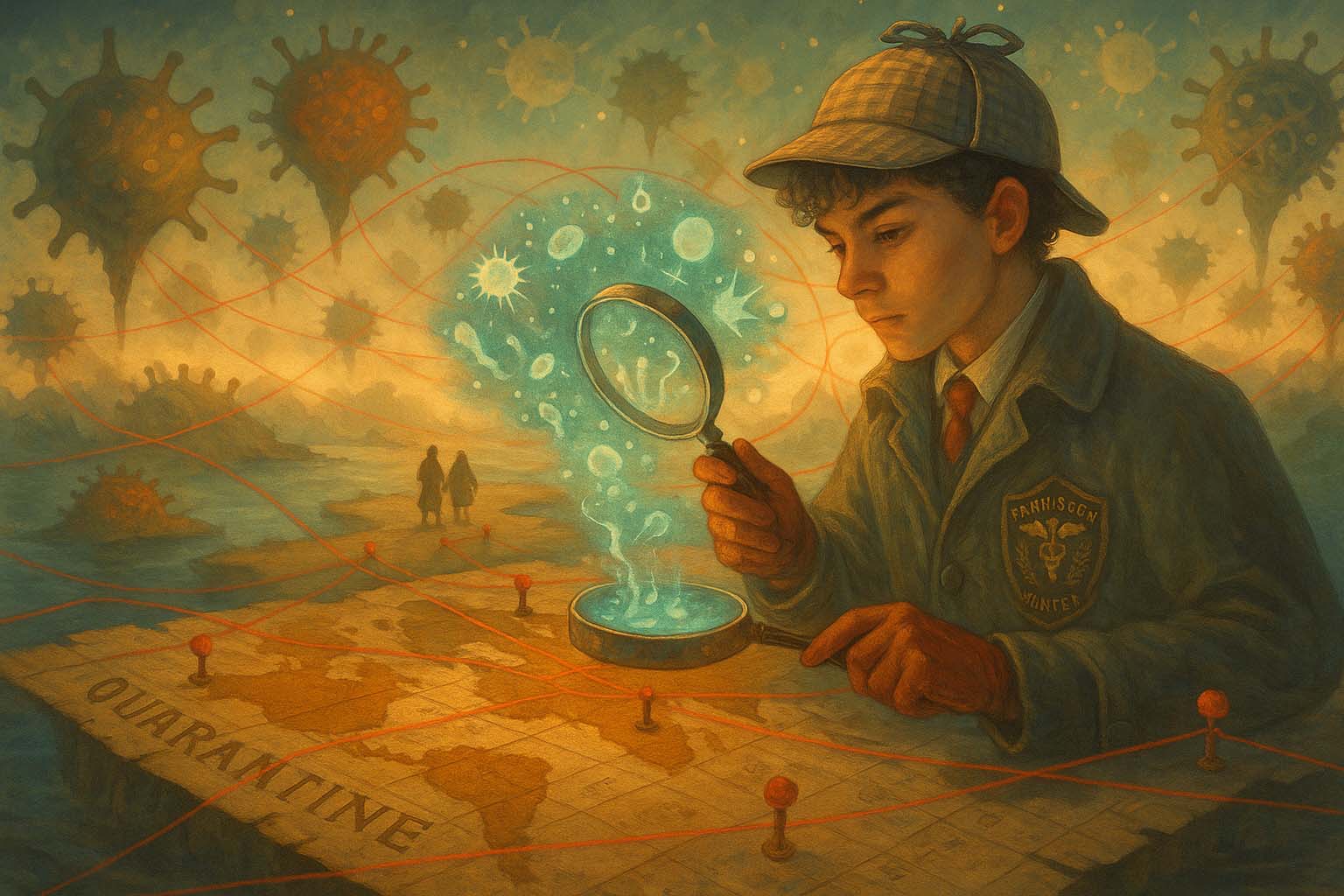
Infectious Diseases
- Posted by admin
- Categories Complex & Integrated Medicine
- Date May 23, 2025
- Comments 0 comment
The Outbreak Detective’s Domain – Cracking the Cases of Fevers, Fungi, and Foreign Invaders
1. Introduction: The Scene of the Specialty
Step into the shoes of an Infectious Diseases (ID) sleuth.
This is medicine’s version of international espionage—tracking invisible agents, deciphering patterns of spread, and tracing exposure routes before they disappear. Infectious Diseases detectives work at the crossroads of microbiology and global health, decoding puzzles that travel through water, wounds, air, insects, and intimacy. Welcome to a world where a fever might be from a jungle trek or a hospital bed, and where one patient’s cough could be the first clue to a wider epidemic.
2. Key Mysteries They Solve (Common Conditions)
These detectives specialise in solving cases involving:
- Fever of Unknown Origin (FUO) – the classic diagnostic thriller.
- HIV, Hepatitis, and STIs – complex conditions shaped by stigma and systems.
- Tuberculosis – the master of latency and mimicry.
- Sepsis & Tropical Infections – high-stakes cases where time, travel, and toxins collide.
Each case demands curiosity, courage, and a mind that thinks in both microscopes and maps.
3. Their Trusted Tools & Techniques
Every detective has their kit—and in Infectious Diseases, tools may include:
- Blood Cultures & Sensitivities – finding the culprit and predicting its weaknesses.
- Serology & PCR Testing – looking for footprints the microbe left behind.
- Travel & Exposure History – the ID detective’s version of a passport stamp trail.
- Radiology & Biopsy – because abscesses, infiltrates, and granulomas tell their own stories.
Here, timing matters—when symptoms began, where the patient went, and what they were exposed to.
4. The Charms of This Field: Why It Captivates the Curious
- Intellectual Adventure: Rare diseases, exotic pathogens, and shifting presentations.
- Global Perspective: Outbreak response, antimicrobial resistance, and travel medicine.
- Interdisciplinary Reach: From microbiology to immunology to critical care.
- Diagnostic Delight: Many infections are treatable—and curable—if correctly identified.
This is medicine with the thrill of the chase and the potential to save communities, not just individuals.
5. Challenges: The Toughest Cases They Face
- Diagnostic Delays – Infections can mimic autoimmune disease, malignancy, or drug reactions.
- Antimicrobial Resistance – A rising threat that demands stewardship and strategy.
- Infection Control Barriers – Hospital outbreaks, public fear, and systemic inequities.
- Global Disparities – Diseases that persist not because we can’t treat them—but because access is limited.
But the seasoned ID detective knows: knowledge shared is a pathogen’s greatest enemy.
6. Famous Cases and Hallmark Clues
- The “Classic Presentation” – Cough, weight loss, night sweats, and upper lobe cavitation: tuberculosis.
- The “Zebra” – Fever, haematuria, and jaundice after river rafting: leptospirosis.
- The “Aha Moment” – Identifying malaria in a febrile patient with recent travel and no prophylaxis.
7. Your Training Trail: How to Join the Investigation
To become an Infectious Diseases detective:
- Train in general and acute internal medicine—ID overlaps with nearly every specialty.
- Study microbiology, parasitology, and immunocompromised states.
- Hone your history-taking—especially around occupation, travel, and exposure.
- Learn public health principles—contact tracing, outbreak containment, and antimicrobial stewardship.
Whether you’re tracking resistant bacteria in an ICU or treating a returned traveller with dengue, you’re always asking: what’s the source—and what’s the spread?
8. Final Words: The Signature of the Infectious Diseases Detective
ID detectives chase threats you can’t always see—but whose footprints are everywhere.
They ask sharp questions, think globally, and act with urgency and humility.
They don’t just treat infections—they help prevent the next one.
So if you’re drawn to mysteries that cross borders, symptoms that evolve like plots, and cures that ripple far and wide—
then this is your global casebook to carry.



